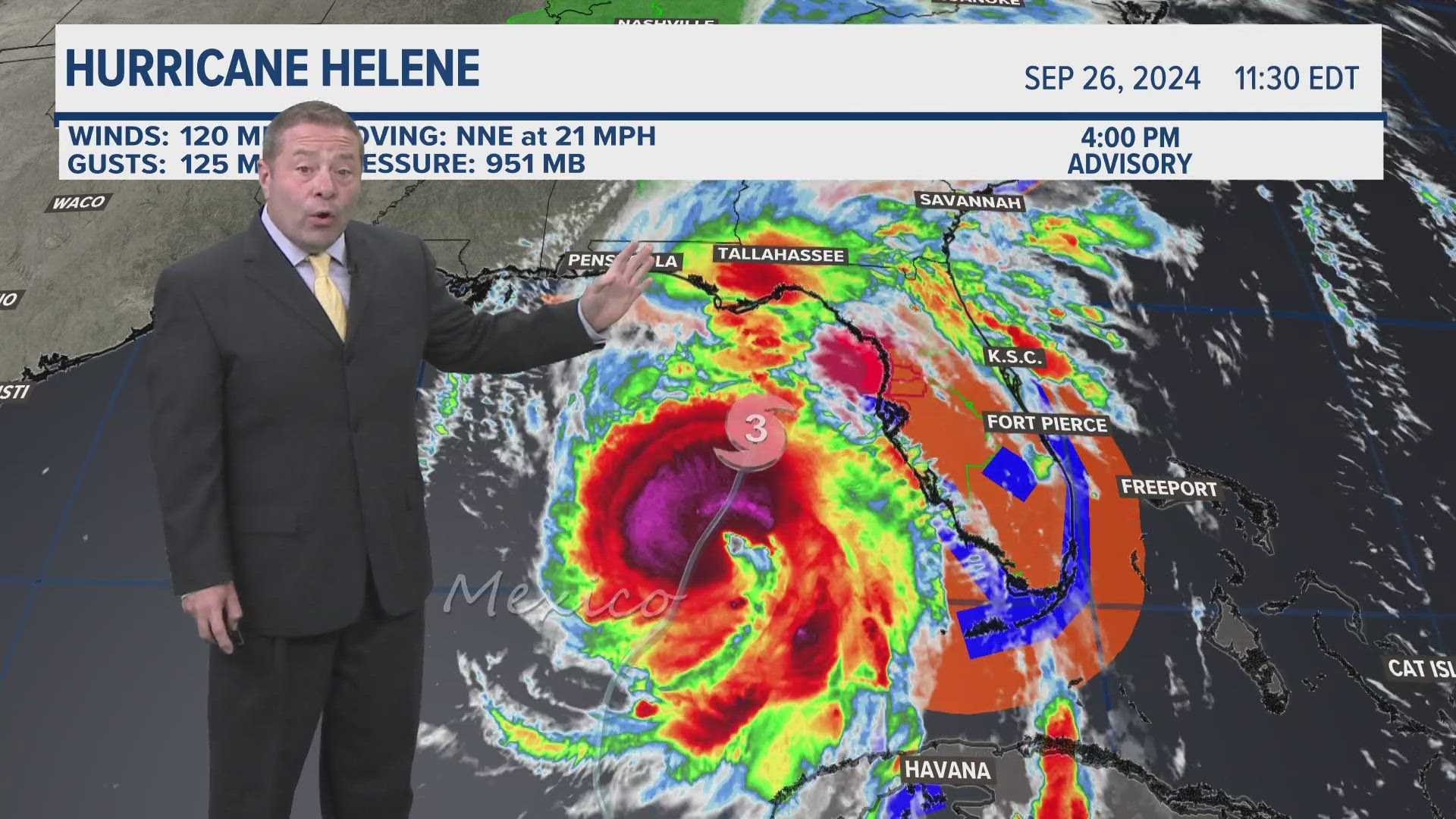News
Hurricane Helene Threatens Florida with ‘Nightmare’ Scenario

Hurricane Helene has intensified to a catastrophic category 4 storm, posing a significant threat as it heads towards Florida‘s Gulf Coast. Authorities are warning that the hurricane could create a “nightmare” scenario, with a potentially life-threatening storm surge anticipated to reach heights of 15 to 20 feet in the Big Bend area of Florida.
The storm, now one of the most powerful to strike the United States this year, is expected to make landfall on Thursday night. By Thursday afternoon, it had reached category 3 status while moving through the Gulf of Mexico, positioned approximately 200 miles southwest of Tampa. As the storm approaches, winds have been reported at speeds of up to 110 mph, with gusts even higher.
Florida Governor Ron DeSantis has declared a state of emergency, advising residents to evacuate, particularly as some areas have already experienced initial storm impacts, including power outages affecting over 600,000 homes and businesses. “It’s not a matter of whether we’re going to get effects, it’s just a question of how significant those effects will be,” DeSantis stated.
The National Weather Service described the storm surge and high winds as “catastrophic” and “deadly,” noting the potential for destructive flooding and infrastructural damage. Warnings and emergency measures have been extended to Georgia, South Carolina, and North Carolina, where significant rainfall and potential flooding are anticipated.
Federal assistance has been mobilized by President Joe Biden. Deanne Criswell, the Federal Emergency Management Agency (FEMA) administrator, emphasized the multistate impact of the storm, predicting significant damage across several states, including areas as far North as Tennessee.
Schools along Florida’s Gulf Coast and in parts of Georgia have been closed in anticipation of the hurricane’s onslaught. Cities such as Tallahassee and others in the path of the hurricane have taken measures to prepare for potentially historic impacts. Tampa International Airport and Tallahassee International Airport have been shut down as part of the pre-storm safety protocols.
Michael Brennan, Director of the National Hurricane Center, urged those under evacuation orders to act quickly, warning that conditions would rapidly deteriorate. Rescue teams and shelters are at the ready as the storm approaches, though some residents in harder-hit areas have chosen to remain.
The hurricane, fueled by the warmer than usual Gulf waters, marks the second major storm to target Florida this year. Officials remain cautious as the region braces itself for what could be a prolonged recovery effort following the storm’s landing.
In communities like Cedar Key, locals are attempting final protective measures amidst a somber atmosphere as residents hope for minimal damage to their homes and livelihoods. “A lot of people when they’re leaving the island are hugging each other and crying, saying ‘I hope we have a home to go back to,'” shared resident Michael Bobbit.
Florida’s preparation efforts involve mobilizing emergency response teams and ensuring that shelters are available for those who have evacuated. As the storm proceeds, it continues to impact daily life, including political events as the Republican vice-presidential candidate JD Vance canceled Georgia appearances as a precaution.












